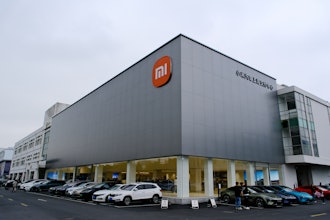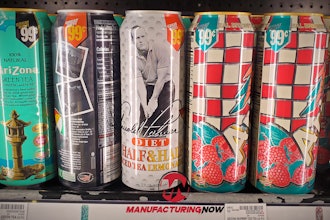Equipment design, quality control, skilled labor — the list of essentials for efficient food manufacturing is long indeed. But many managers don’t fully consider one factor that arguably has as much to do with production efficiency as any other single variable: equipment maintenance.
The food industry, in particular, faces challenges that make equipment maintenance uniquely critical. With new food products coming to market faster and more frequently than ever before, CPG companies must constantly add or modify equipment; this imperative strains maintenance staffs who must keep equipment running despite the changes. Also, food production technology continues to evolve. Nearly two-thirds of all food processing plants are more than 20 years old — and the cost of keeping up with production advancements is causing food manufacturers to invest more in capital equipment than nearly any other industry.
ALSO SEE: Washing Down Drives Without Washing Away Profits
Lean manufacturing and other continuous improvement disciplines are finding their way into more food manufacturing operations than ever before, placing huge emphasis on machine maintenance. Production standards and tolerances are also impacted by external mandates, not only from state and federal regulations but also industry standards like the Global Food Safety Initiative (GFSI) and FSSC 22000.
On the business side, large CPG companies insist on consistent quality across all their plants, large and small — while smaller manufacturers face the need to keep up with their billion-dollar competitors. Finally, production operations are continually impacted by mergers and acquisitions that force frequent changes in manufacturing equipment.
Amid all these challenges, food manufacturers must keep their equipment running smoothly, efficiently, within tight standards, and without expensive downtime. So important is maintenance to profitable operation, in fact, that it helps to frame the issue not simply as maintenance but as an “equipment reliability program”— a term that much better captures its true value.
An equipment reliability strategy is the result of a series of steps that identify, prioritize, and execute those tasks needed to keep a production facility operating at peak efficiency at minimal cost. The first step is to identify the critical equipment; while it may appear that every machine is important, in all manufacturing operations there are constraining machines that, if offline, will cause major production slowdowns or even stoppages. Equipment should be ranked in order of criticality, with those at the top receiving highest emphasis in terms of upkeep, quality checks, failure analysis, and repair or replacement parts.
Next is an evaluation of the existing maintenance program. The evaluation should identify all procedures, including parts programs, recordkeeping, and workflows that support the maintenance effort. Special emphasis should be placed on work orders for the repair or replacement of key items that can bring down a machine. Maintenance staff should check these records each month; if failures to these machines are still occurring, it could be a sign that orders aren’t being placed or addressed in a timely manner.
Once the inventory tasks are complete, it’s time to consider a comprehensive maintenance approach. There are three primary ways to approach equipment maintenance: Run-to-Failure, Preventive Maintenance and Predictive Maintenance. The first, Run-to-Failure, is actually a defensible strategy if the cost of maintenance is greater than the cost of unexpected failure. More often, however, a combination of preventive and predictive programs are warranted.
Preventive Maintenance (PM) represents the time-directed approach to reliability. It mandates inspection, diagnostics, service, and parts replacement according to well-planned and timely schedules. Because preventive maintenance is schedule-based, it works especially well in food manufacturing. For example, where multiple processing lines are coupled with packaging/filling lines that are run intermittently, there are natural opportunities for PM when such lines are not in operation.
It’s important to note that because Preventive Maintenance calls for work to be done by schedule, it may result in tasks that are executed where wear has not occurred. Oftentimes production is slowed due to drop offs in consumer demand or other business reasons, yet maintenance staffs continue to service equipment on their original schedule. Also, PM may take technicians away from equipment that is close to, or actually, experiencing failure.
Predictive Maintenance (PdM), in contrast to PM, is the condition-directed approach. It relies heavily on sensors and asset performance management software to identify maintenance issues before problems occur. PdM is especially important in those places where equipment downtime is unacceptable, where risks to product quality are imminent, and where replacement costs are high.
Predictive Maintenance also can result in long-term savings, especially when combined with PM activities. Many Preventive Maintenance tasks can’t be justified on a cost basis — research has shown that as many as 30% of all preventive tasks can be eliminated through the use of PdM.
Correct decisions on PM, PdM and even Run-to-Failure can be made through failure analysis. Advanced examinations of production equipment and their failure points will produce insights that inform effective maintenance schedules. Maintenance specialists will typically employ Reliability Centered Maintenance (RCM) analysis, a structured approach to identifying machine tool subsystems, to establish safe minimums for maintenance. Inspectors will also perform Failure Mode Effect Analysis, which looks at potential failure points, to determine how to mitigate failures.
An important aspect of equipment maintenance, one that RCM is designed to uncover, is critical spares. The goal for critical spare parts planning is to maximize efficiency; if a part is readily available from a reliable vendor on a timely basis, for instance, it’s not necessary to stock it in house. RCM will also reveal the hidden failures that are not normally observable or considered. Just as most people don’t look at the condition of the spare tire in their car’s trunk, hidden failures can turn a minor problem into something much more consequential — and expensive.
The last step in a comprehensive equipment reliability strategy is how to minimize intrusive maintenance. It’s important to realize that Preventive Maintenance can sometimes result in accelerated failure of the part in question, or in adjacent parts. If a technician has to take off covers or subassemblies to examine a part, the disassemble/reassemble activity can potentially increase the likelihood of a future breakdown. In such cases, non-invasive predictive tools should be used. Ultrasound detection, infrared thermography, oil analysis, vibration analysis, and other procedures can reveal the health of a system or component part without compromising its lifespan. These tools, used singly or in combination, are well worth the time and effort to implement as a method to lower the incidence of intrusive maintenance.
Proactive equipment maintenance programs have been shown to result in significant cost reductions, with some manufacturers tracking savings as high as 80%. Furthermore, a proactive approach results in a more reliable, more productive food manufacturing environment — one in which even greater process efficiencies are possible.
Working with a qualified outsourcer can greatly simplify the task of maintaining manufacturing equipment, and at a significantly reduced cost. Finding and retaining a qualified maintenance staff can be difficult, not to mention the investments associated with ongoing training. Top-quality outsourcers can increase production asset performance by 30% or more; in fact, in one Grant Thornton study, nearly 14% of food manufacturers surveyed were outsourcing their maintenance operations.
With all the responsibilities of meeting routine production requirements, manufacturing managers often don’t consider the cost associated with equipment failures. Yet every time a machine goes down, thousands of dollars in lost production can result. Just as important, intangible costs such as on-time shipping and the possibility for lost business also result.
With so much at stake, managers are wise to address their maintenance efforts in a coordinated manner, either through outsourcing or through a well-planned internal effort. As a recipe for improving operations, equipment maintenance is the small ingredient that can make a big — and profitable — difference.





















